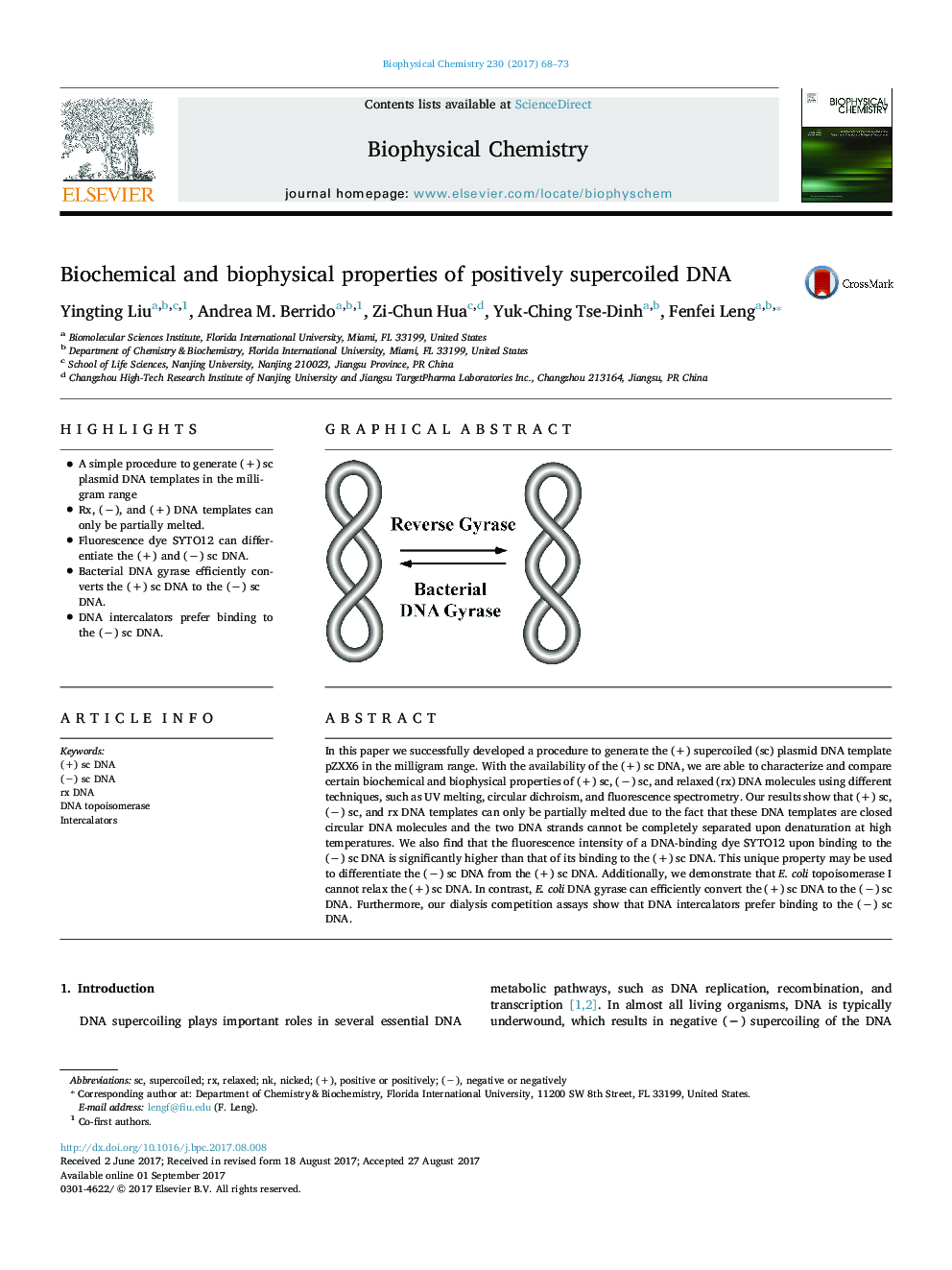| Article ID | Journal | Published Year | Pages | File Type |
|---|---|---|---|---|
| 5370576 | Biophysical Chemistry | 2017 | 6 Pages |
â¢A simple procedure to generate (+) sc plasmid DNA templates in the milligram rangeâ¢Rx, (â), and (+) DNA templates can only be partially melted.â¢Fluorescence dye SYTO12 can differentiate the (+) and (â) sc DNA.â¢Bacterial DNA gyrase efficiently converts the (+) sc DNA to the (â) sc DNA.â¢DNA intercalators prefer binding to the (â) sc DNA.
In this paper we successfully developed a procedure to generate the (+) supercoiled (sc) plasmid DNA template pZXX6 in the milligram range. With the availability of the (+) sc DNA, we are able to characterize and compare certain biochemical and biophysical properties of (+) sc, (â) sc, and relaxed (rx) DNA molecules using different techniques, such as UV melting, circular dichroism, and fluorescence spectrometry. Our results show that (+) sc, (â) sc, and rx DNA templates can only be partially melted due to the fact that these DNA templates are closed circular DNA molecules and the two DNA strands cannot be completely separated upon denaturation at high temperatures. We also find that the fluorescence intensity of a DNA-binding dye SYTO12 upon binding to the (â) sc DNA is significantly higher than that of its binding to the (+) sc DNA. This unique property may be used to differentiate the (â) sc DNA from the (+) sc DNA. Additionally, we demonstrate that E. coli topoisomerase I cannot relax the (+) sc DNA. In contrast, E. coli DNA gyrase can efficiently convert the (+) sc DNA to the (â) sc DNA. Furthermore, our dialysis competition assays show that DNA intercalators prefer binding to the (â) sc DNA.
Graphical abstractDownload high-res image (140KB)Download full-size image
